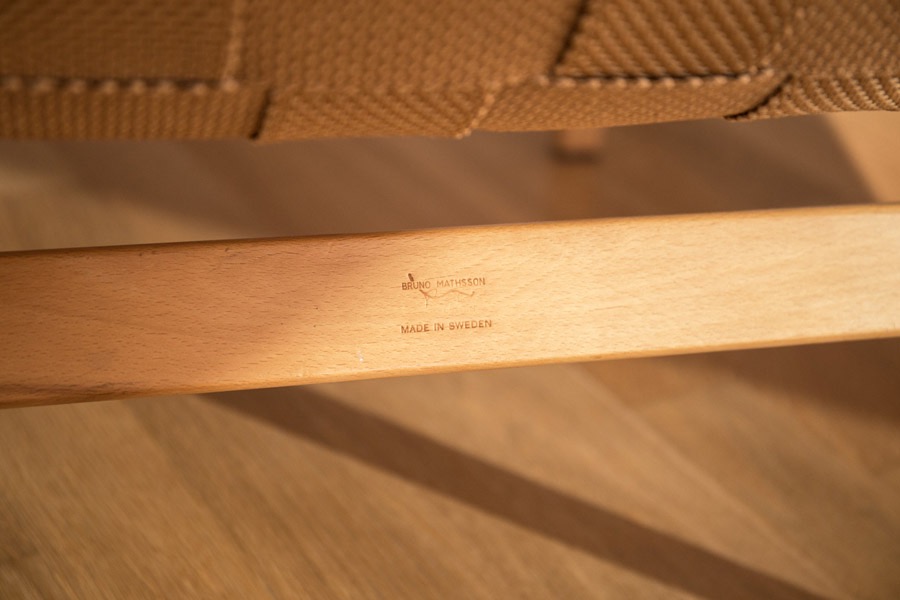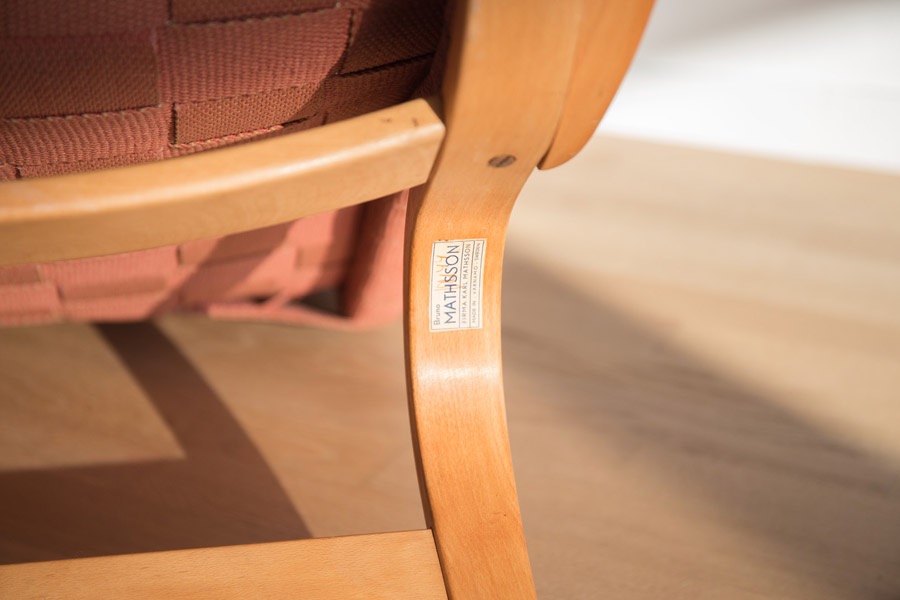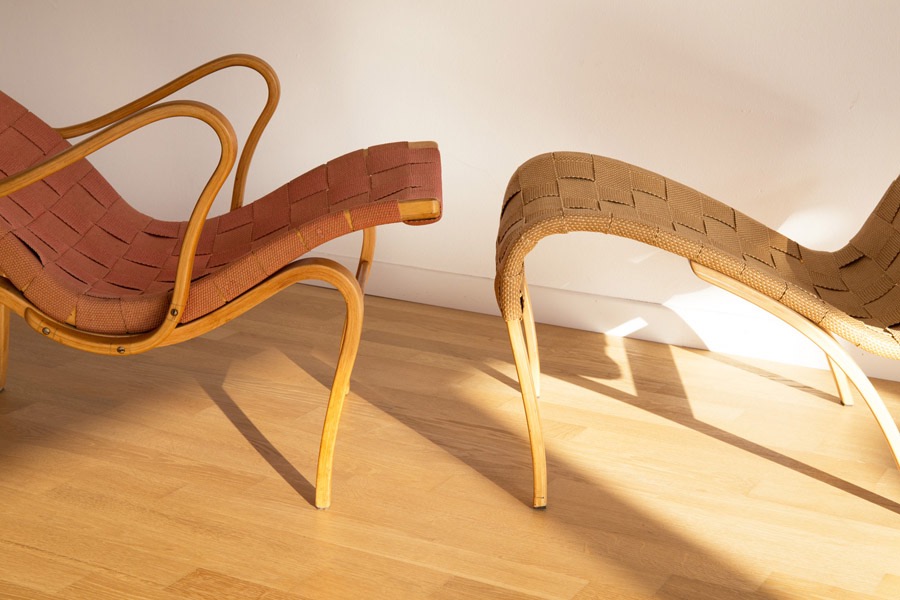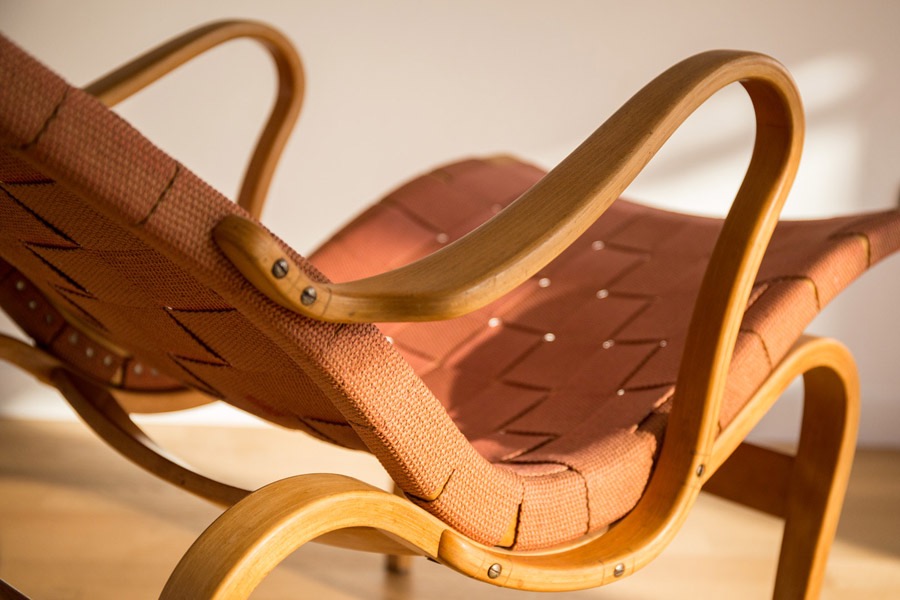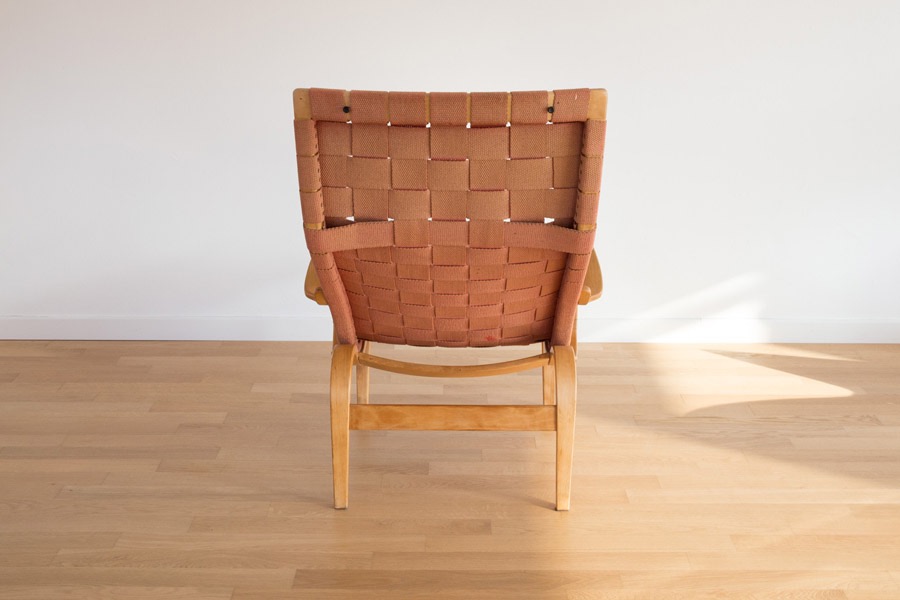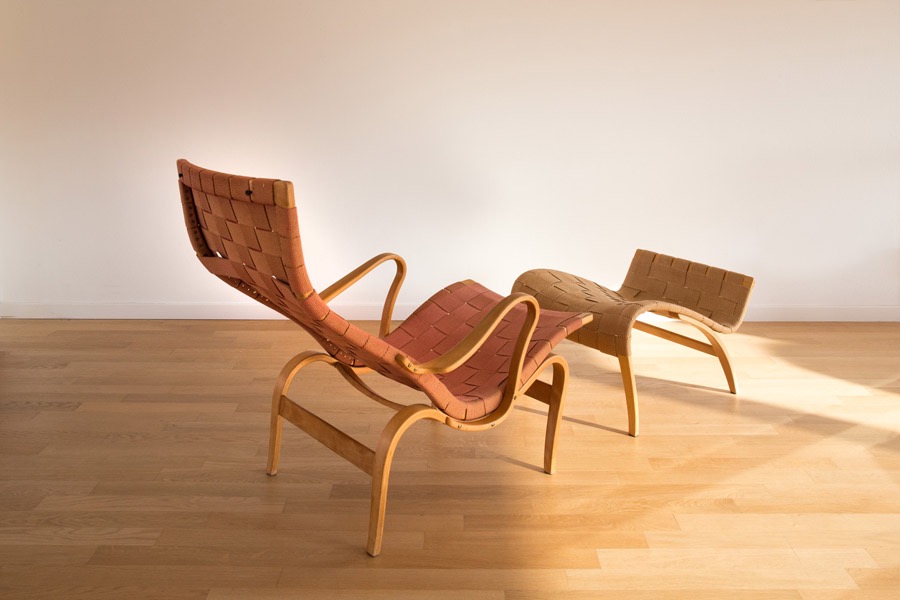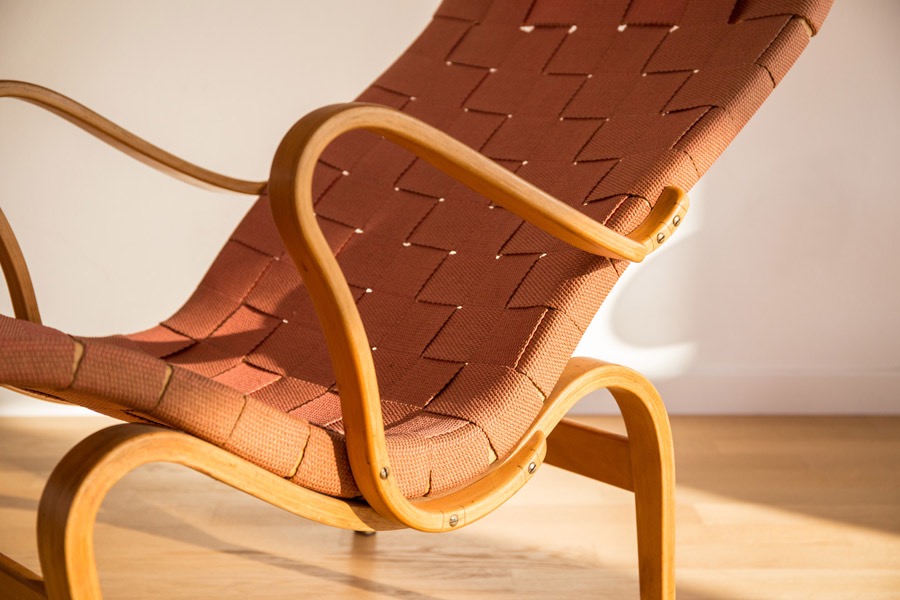Pernilla easy-chair & stool
The “Pernilla” chair was designed by the famous Swedish architect Bruno Mathsson in 1943. Considered one of the ergonomic wonders of the time, this iconic shape still retains a fresh design today. The sinuous, lightweight shapes are the basis of Mathsson’s research in every project. Upholstered with bands of cotton tape and woven paper fibre, it gives the seat elasticity and ergonomics. In these objects one can clearly read the evolution of organic design: liberty is cleaned up, simplified…we go towards purer forms, without frills.
It seems that the evolution of the Pernilla chair began when Mathsson began to deepen his studies of “seat mechanics”. The Pernilla 1 is the result of Mathsson’s empirical experiments, which, lying in a snowbank, measures the imprint of its natural posture and brings it back to the seat.
Bruno Mathsson was born in 1907 in Värnamo, Sweden. His father, Karl, was a master cabinetmaker of the time and Bruno was immediately exposed to the possibilities of new woodworking technologies. A self-taught designer and architect, Mathsson was inspired by the functionalist movement, and spent most of the 1920s and 1930s studying the functional possibilities of wood to expand the work his father started.
Bruno Mathsson’s furniture designs experiment with curves and heights, and are guided by the concepts of ergonomics and functionality.
At the world exhibition in Paris in 1937, Mathsson exhibited a collection of curved beech furniture, launching his international reputation.
The Eva chair (then called a work chair) was purchased for the public spaces of the Musseum of Modern Art in New York.
In 1939, it exhibited at the New York World Fair, cementing its popularity in the United States.
In 1960, Mathsson once again focused on furniture and began experimenting with new materials and working with tubular steel.
The armchairs and chaise-lounge designed by this architect, bear women’s names, inspired by the sinuous and graceful curves.
The poetics that distinguishes Matsson’s work is the desire to give continuity between the outside and the inside of every home and building… a common thread that creates a continuous link between nature and the environment in which we live… thanks to organic forms but also to the use of natural materials.
Size: 50 x 90 x h. seat 38,5 / h. back 88
Stool – 50 x 62 x h 35
Read more about shipping and taxation.

